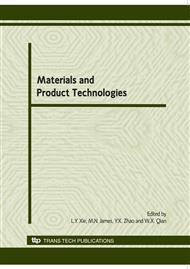p.147
p.151
p.156
p.161
p.166
p.171
p.176
p.181
p.186
Thermo-Mechanical Fatigue Behavior Investigation and Fracture Analysis on Austenitic Stainless Steel of Surge Line in Nuclear Power Plant
Abstract:
In order to confirm the structural integrity of pressurizer surge line affected by thermal stratification and thermal shock, the thermo-mechanical fatigue (TMF) behavior of the material used for surge line was investigated based on the real situation in the pressurized water reactor (PWR). Smooth, hollow specimens were subjected to in-phase (IP) and out-of-phase (OP) cycling in air under a mechanical strain control mode. For the sake of comparison, low cycle fatigue (LCF) tests were also performed at the peak temperatures of TMF cycling. The Nano Hardness Tester was used to test the nano hardness of the sample on the cut section surface. The results are shown that there is no significant difference between the IP, OP and IF lives in the investigated temperature ranges. The fracture analysis reveals that the crack initiation and propagation occurred in a transgranular mode under OP, IP and IF cycling condition, and a harden layer occurrence may be the cause of the crack initiation.
Info:
Periodical:
Pages:
166-170
Citation:
Online since:
June 2010
Authors:
Price:
Сopyright:
© 2010 Trans Tech Publications Ltd. All Rights Reserved
Share:
Citation:


